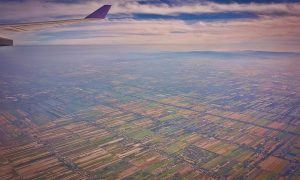Ted Nordhaus in Aeon:
 In a recent Nature Sustainability paper, a team of scientists concluded that the Earth can sustain, at most, only 7 billion people at subsistence levels of consumption (and this June saw us at 7.6 billion). Achieving ‘high life satisfaction’ for everyone, however, would transgress the Earth’s biophysical boundaries, leading to ecological collapse.
In a recent Nature Sustainability paper, a team of scientists concluded that the Earth can sustain, at most, only 7 billion people at subsistence levels of consumption (and this June saw us at 7.6 billion). Achieving ‘high life satisfaction’ for everyone, however, would transgress the Earth’s biophysical boundaries, leading to ecological collapse.
Despite its seeming scientific precision, the claim is old, not new – the latest iteration of the longstanding assertion that our population and consumption might soon exceed the Earth’s fixed ‘carrying capacity’. The concept, tellingly, owes its origin to 19th-century shipping, referring to the payload capacities of steam ships. It jumped from the inanimate to the terrestrial at the end of the 19th century, describing the maximum number of livestock or wild game that grassland and rangeland ecosystems could sustain.
Applied to ecology, the concept is problematic. Cargo doesn’t multiply of its own volition. Nor can the capacity of an ecosystem be determined from an engineer’s drawings. Nonetheless, environmental scientists have, for decades, applied the concept to human societies with a claimed precision that belies its nebulous nature.
More here.
